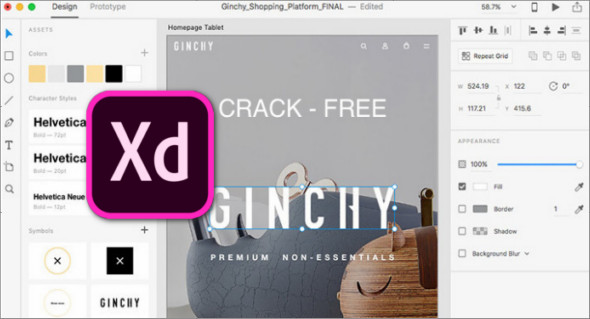
UI creations made inside Adobe Experience Design can directly support interactions, triggers, auto-animations, overlays, and many other effects and behaviors. Also, streamlined animation design (utilizing linking artboards into full animations), symbol designer (for creation of new app icons, UI buttons, and other visual elements such as logos, banners, and transition graphics), fully-featured prototyping, and testing (interactive and clickable prototypes, with support for deploying projects on both web browsers and mobile platforms via supplied iOS and Android test apps), built-in support for voice design, Adobe font integration, and more.

Adobe XD fixed that with the adoption of new tools, features, and services that are needed for modern UX/UI design, such as full support for vector-based graphics (crucial for deployment on devices with an incredible variation of display resolutions), responsive resize (with automatic adjusting of all UI elements such as text fields, photos, UI buttons, and more), fast creation of repeat grids (for elements such as photo galleries and lists) and more. It provides a unique toolset to its users, who were for years frustrated that Adobe’s core digital drawing applications (such as Photoshop and Illustrator) lacked the tools and features needed for a modern web app or portable app design that were either hard to use or completely missing. Import and Edit from Photoshop, Illustrator, and Sketch.


One of the reasons this app so quickly managed to become a trend-setter in modern UX/UI design is its arrival to the Creative Cloud subscription, enabling a large subscriber base of Adobe Inc to gain instant access to this powerful app.


 0 kommentar(er)
0 kommentar(er)
